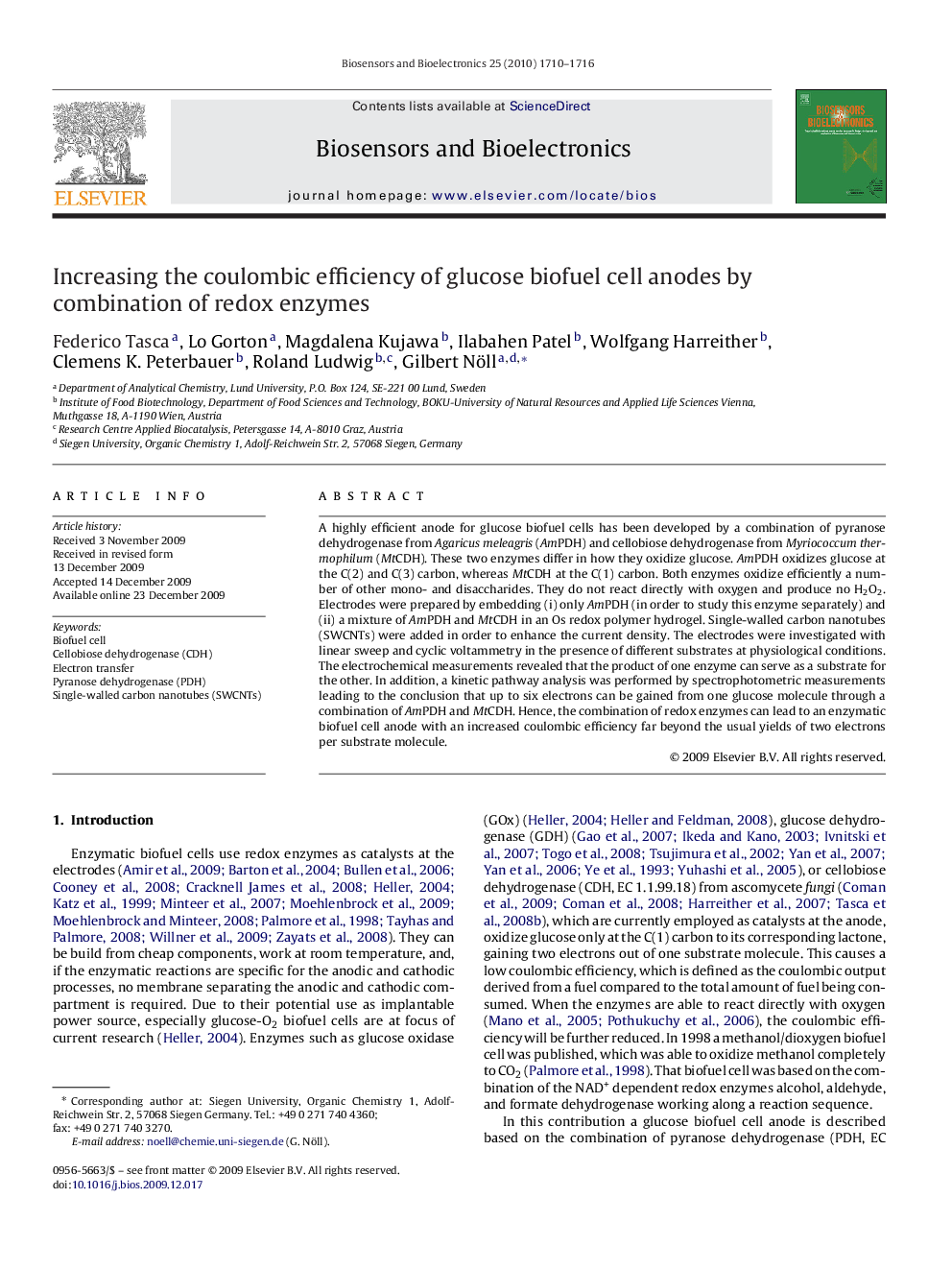| Article ID | Journal | Published Year | Pages | File Type |
|---|---|---|---|---|
| 867865 | Biosensors and Bioelectronics | 2010 | 7 Pages |
A highly efficient anode for glucose biofuel cells has been developed by a combination of pyranose dehydrogenase from Agaricus meleagris (AmPDH) and cellobiose dehydrogenase from Myriococcum thermophilum (MtCDH). These two enzymes differ in how they oxidize glucose. AmPDH oxidizes glucose at the C(2) and C(3) carbon, whereas MtCDH at the C(1) carbon. Both enzymes oxidize efficiently a number of other mono- and disaccharides. They do not react directly with oxygen and produce no H2O2. Electrodes were prepared by embedding (i) only AmPDH (in order to study this enzyme separately) and (ii) a mixture of AmPDH and MtCDH in an Os redox polymer hydrogel. Single-walled carbon nanotubes (SWCNTs) were added in order to enhance the current density. The electrodes were investigated with linear sweep and cyclic voltammetry in the presence of different substrates at physiological conditions. The electrochemical measurements revealed that the product of one enzyme can serve as a substrate for the other. In addition, a kinetic pathway analysis was performed by spectrophotometric measurements leading to the conclusion that up to six electrons can be gained from one glucose molecule through a combination of AmPDH and MtCDH. Hence, the combination of redox enzymes can lead to an enzymatic biofuel cell anode with an increased coulombic efficiency far beyond the usual yields of two electrons per substrate molecule.
